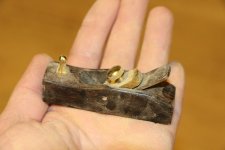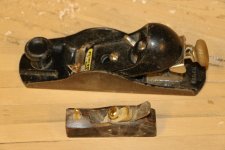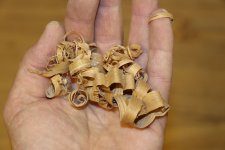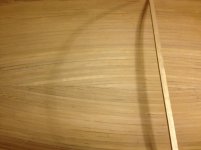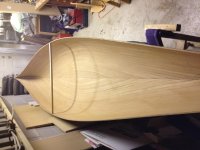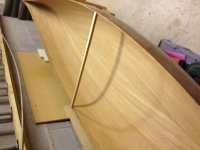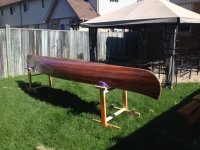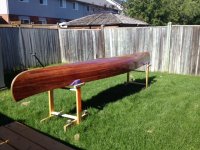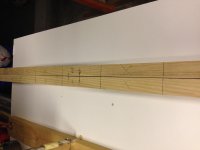Despite my setbacks here and there, I am actually making some progress, and feeling pretty good about it. I got the epoxy in today, so I’m trying to figure out when to apply the additional coats to cover up my, uh, little epoxy mishap.
I mentioned that I was going to machine scuppers into the inwales. In my original spacing for the scuppers, I set myself up for a 6” long opening, followed by a 2” solid section. After much thought, I revamped it for a 4” opening with a 3” solid section. More traditional, I suppose.
Anyway, here’s my set-up… I set up my drill press with a 3/8” brad point drill bit. I then clamped a straight piece of stock to the table to use as a fence and used my original test scupper as a guide. You can see that there are two lines on my fence. One for each side of the drill bit. This allowed me to quickly and accurately align the inwale with the bit. Just slide along and drill. You can see the left and right holes on each side of the lines. The holes cut really easily and were done quite quickly. Next was to use my jig saw to connect the dots between the lines, so to speak. With a brand new blade, my cuts were clean and pretty straight. Here’s the result…
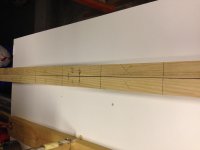
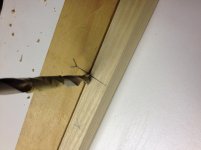
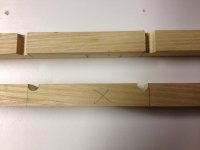
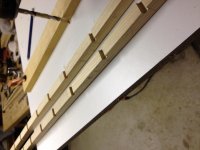
I finished them up with a ½” round cylindrical sanding sleeve. Worked great.
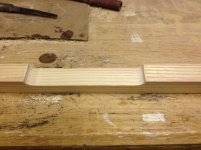
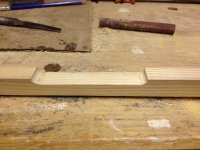
With those behind me, I turned to the decks. My design inspiration for the design I finally settled on came from the arrowhead or spearhead decks of the early 1900’s. The St. Louis Meramec Canoe Company, and the Penobscot Canoe Company both utilized this methodology. Their thought was that this design was far superior (stronger) to the decks of the day because it was not interrupted by the inwales extending all the way to the point of the deck. I’m not sure that still holds true for today. I just chose it as a little bit of a nod to our predecessors, as well as the fact that I like the looks. I drew this design out in CAD and would like to offer it up to anyone who wants it. I can get it to you in an AutoCAD format or PDF. Just PM me and I’ll send it to you J
I started with a nice piece of ¾” ash stock about 4 ½” wide. I cut it a little longer than what was needed. I sliced the material from corner to corner and flipped one of them over. This gives you a triangular shaped wedge. I decided to add a “racing stripe” to the deck, so I sandwiched 3 pieces of veneer between the ash, and glue it up.
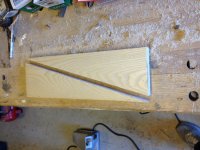
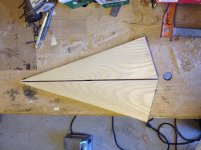
Here’s the paper deck template.
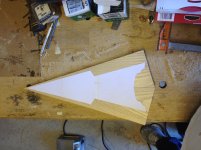
This is my quick clamping set up for gluing the deck pieces together. Note to self…put something under the glue line so that the whole assembly is not glued together.
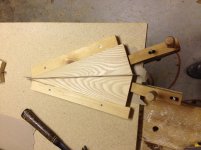
These are the assembled deck blanks, and of course the “racing stripe”. Not that I go very fast.
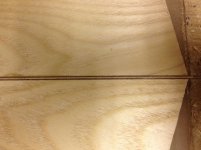
Next step is to cut final shape of the decks and begin the fitting process.
Thanks for reading. I hope you didn’t fall asleep and wake up 2 hours later with a keyboard imprint on your cheek. Sorry about that.

